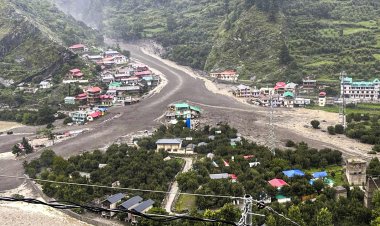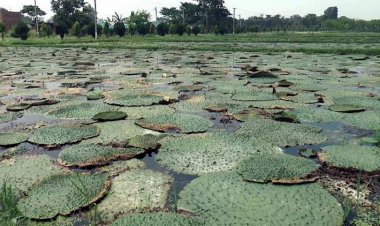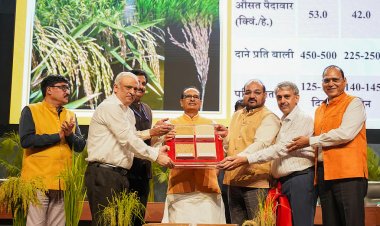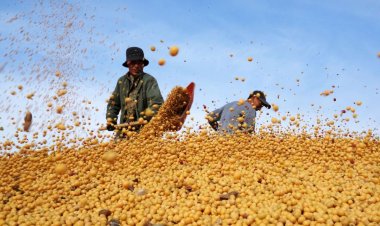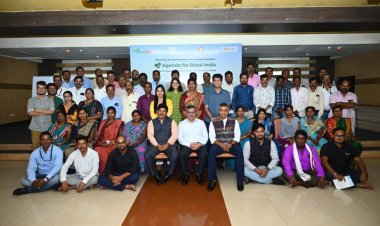How to increase the productivity and production of foodgrains
India’s current population of 1.39bn is likely to reach 1.51bn by 2030. The country would need around 355 mt of foodgrains by 2030, i.e., around 50 mt more, which means about 5 mt per annum of additional foodgrain production. A fundamental question arises as to whether India will remain self-sufficient in foodgrain production. The challenge to produce more is indeed formidable as per capita arable land and irrigation water are both decreasing, besides increasing abiotic and biotic stresses.
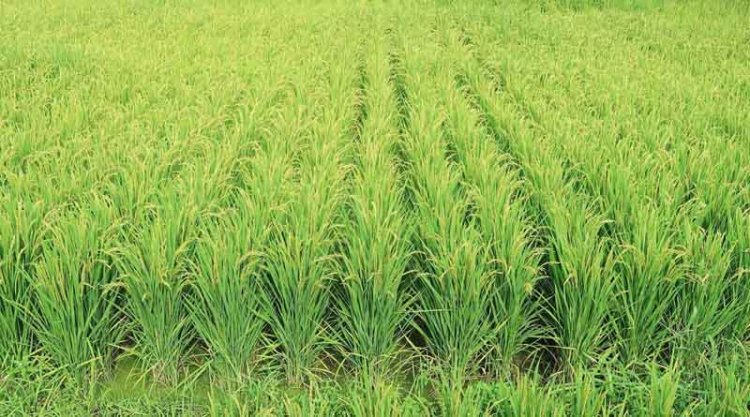
The world’s population will reach 9.8bn by 2050, about 34 per cent higher than at present. Out of 794.6 mn undernourished people globally, 779.9mn live in developing countries (UN, 2017). It is estimated that, globally, we will require 70 per cent more food (FAO, 2009) considering the present dietary pattern, income and consumption scenario.
The country would need around 355mn tonnes (mt) of foodgrains by 2030 (FICCI, 2019), i.e., around 50 mt more, which means about 5 mt per annum of additional foodgrain production. A fundamental question arises as to whether India will remain self-sufficient in foodgrain production. The challenge to produce more is indeed formidable as per capita arable land and irrigation water are both decreasing, besides increasing abiotic and biotic stresses.
In order to discuss the current constraints in and options for bridging the yield gaps and to suggest strategies to increase both production and productivity of foodgrains, TAAS, a neutral think tank, and ICAR in collaboration with IRRI, ICRISAT and ICARDA had organized a “National Workshop on Bridging the Yield Gaps to Enhance Foodgrain Production: A Way Forward” on 26 August last year. A total of 119 diverse stakeholders from the Central and State Governments, CG Centres, scientific institutions, private seed industry and farmers participated.
The main objectives of the workshop were: i) to discuss and target specific crop-wise areas to bridge the yield gaps, ii) to identify specific constraints and possible options for increasing productivity crop-wise/eco-region-wise to enhance foodgrain production, and iii) to identify specific constraints and suggest a clear strategy to increase both production and productivity of foodgrains.
Strategic initiatives
The workshop came up with valuable findings, suggestions and recommendations. An urgent need was felt to re-visit the projected demand for foodgrains, considering the current diversified food basket and the future requirements for both food and feed and keeping in view the demographic changes in different agroecologies in India.
A ‘Strategy Paper’ needs to be developed on priority jointly by the ICAR, NAAS and TAAS to ensure future food and feed security vis-a-vis the demand for the foodgrains. This should include a clear ‘Road Map’ to bridge the yield gaps in different foodgrain crops through coordinated efforts by relevant stakeholders. Crop-wise and state-wise yield gap analysis should be made to define the year-wise production targets for major foodgrain crops. Also, there is a need to develop a ‘Vision Document’ for each crop.
The workshop recommended that a committee comprising DDG (Crop Sciences), DDG (Horticultural Sciences), DDG (Natural Resource Management) and Agriculture/Horticulture Commissioner be constituted urgently to decide on agronomic trials of varieties in advanced varietal trials (AVT) of AICRPs adopting ‘Global Yield Gap Atlas (GYGA) Protocol’ for the estimation of yield gaps under various geographic locations in different states.
Strengthening research
A major thrust is needed on germplasm enhancement and pre-breeding. There is a need to focus on intensive use of biotechnology tools such as molecular marker-assisted selection, genomic selection (GS), transgenic and genome editing (CRISPR/Cas9), use of speed breeding, precision phenotyping, integrating empirical breeding with genomics-assisted breeding (GAB), and doubled haploid (DH) technology for developing better varieties. Breeders from SAUs and ICAR centres should be trained in these technologies at advanced ICAR centres like NIPB and CGIAR centres like ICRISAT in India. A National Mission Mode Project on hybrid research with an allocation of Rs 1,000 crore should be initiated on priority by ICAR.
A number of key researchable issues need to be addressed on priority. Some of them are as follows: In the case of rice, for example, genomic-assisted breeding should be used for more enhanced genetic gains. Super rice (with >10 t/ha yield) should be developed for the most favourable ecologies. Hybrid wheat needs to be developed with optimized partitioning of grain, maintaining disease resistance and lodging/drought tolerance with wider adaptability.
In maize, the major focus must now be on genetic diversification through the introgression of exotic germplasm and the recycling of lines with tolerance/resistance to major abiotic and biotic stresses. There should be a greater focus on specialty maize, viz., sweet corn, baby corn, popcorn, specialty corns, single-cross and QPM hybrids with nutritional traits. In pearl millet, dual-purpose hybrids need to be developed for the driest A1 zone, with resistance to downy mildew, tolerance to drought/heat, and rich in micronutrients (Fe and Zn). Also, there is an urgent need to develop short-duration and high-yielding pulse varieties.
Development efforts
The workshop felt that there was a need to adopt a two-pronged strategy to bridge the yield gaps — vertical gap by improving productivity and horizontal gap by increasing the area under cultivation. Crop diversification through potential non-conventional crops needs to be promoted. There is considerable potential for area expansion of short-duration varieties of chickpea in Andhra Pradesh, Tamil Nadu and Karnataka; inter-mixed cropping of black gram, green gram, pigeonpea and chickpea in central and peninsular regions; introduction of short-duration pigeonpea in North-western region and lentils and peas in rice fallows in Bihar, West Bengal and Odisha; and promoting moong bean as a summer crop in the rice-wheat system in the north, pulses in North-Eastern India and urad bean and moong bean in southern coastal India under rice fallows.
Also, there is a need for increasing the productivity of pearl millet in Rajasthan, Maharashtra, Karnataka, Andhra Pradesh and Telangana; extending the cultivation of hybrid rice; enhancing area under single-cross maize hybrids; and replacing upland rice in Eastern and Central India, and boro rice in West Bengal and Bihar with maize. There is an urgent need to develop high-yielding and nutrition-rich varieties of several underutilized pseudo-cereals, legumes and small millets.
A major thrust is needed on quality seed production of best high-yielding varieties and hybrids of crops and on enhancing the seed replacement rate (SRR) of important foodgrain crops. A focused five-yearly ‘Seed Rolling Plan’ comprising a network of efficient seed producers across both public and private organizations, is required. The states must aim to increase the SRR up to 33 per cent for self-pollinated crops and more than 90 per cent under hybrids in the case of cross-pollinated crops.
There is a strong need to re-orient the existing extension system to make it more effective through partnerships with the private sector, civil societies (NGOs, FPOs,) and the involvement of youth (including women) as ‘Paid Technology Agents and Input Providers’. Through the option of corporate social responsibility (CSR) as well as public-private partnerships (PPP), each KVK could become a strong Knowledge-cum-Innovation Centre.
Effective coordination is also needed between the Agriculture Ministry and ICAR and also between state agriculture departments and SAUs to undertake field demonstrations/mini kits. A well-defined location-specific package of practices, including soil testing, seed rate, seed treatment, plant population, irrigation schedule, use of biofertilizers, biopesticides and required inorganic fertilizers, pesticides/herbicides, etc. will have to be adopted.
Enabling policies
The workshop felt that policy support from the government was required to accelerate foodgrain production both crop-wise and ecosystem-wise. Also, urgent attention is needed to provide farmers with critical inputs, such as high-quality seed, credit, good agricultural practices to improve productivity, enhancing use of biofortified varieties/hybrids, better minimum support price (MSP) for hybrids, and strong linkage between hybrid rice research, seed production and extension agencies.
There is an urgent need for the use of disruptive innovation technology such as genome editing (CRISPR/Cas9), for which the government needs to clear the guidelines for the use of SDN-1 and SDN-2 categories, to be at par with normal breeding methods and to be out of biosafety testing requirements as already done in countries such as the US, Japan and Australia.
The adoption of public sector hybrids and biofortified crops needs to be enhanced through PPPs and enabling policy support. Maize farmers must be supported with appropriate production incentives (on account of saving water and addressing issues like residue burning, energy saving, etc.) and paid the price differential (on account of differences between market price and MSP).
For faster adoption of public-bred high-yielding varieties (HYVs) and hybrids, a new policy decision by the government is urgently needed for the grant of exclusive area-wise licensing to well-established R&D private seed companies for the GYGA production and distribution of quality seeds to the farmers. Besides, the farmers need to be organized in the form of farmers' groups/cooperatives/FPOs and linked directly to the industry.
(Dr RS Paroda is Chairman, Trust for Advancement of Agricultural Sciences (TAAS) and former Director-General of ICAR and Secretary, Department of Agriculture Research and Education (DARE)).



 Join the RuralVoice whatsapp group
Join the RuralVoice whatsapp group


















